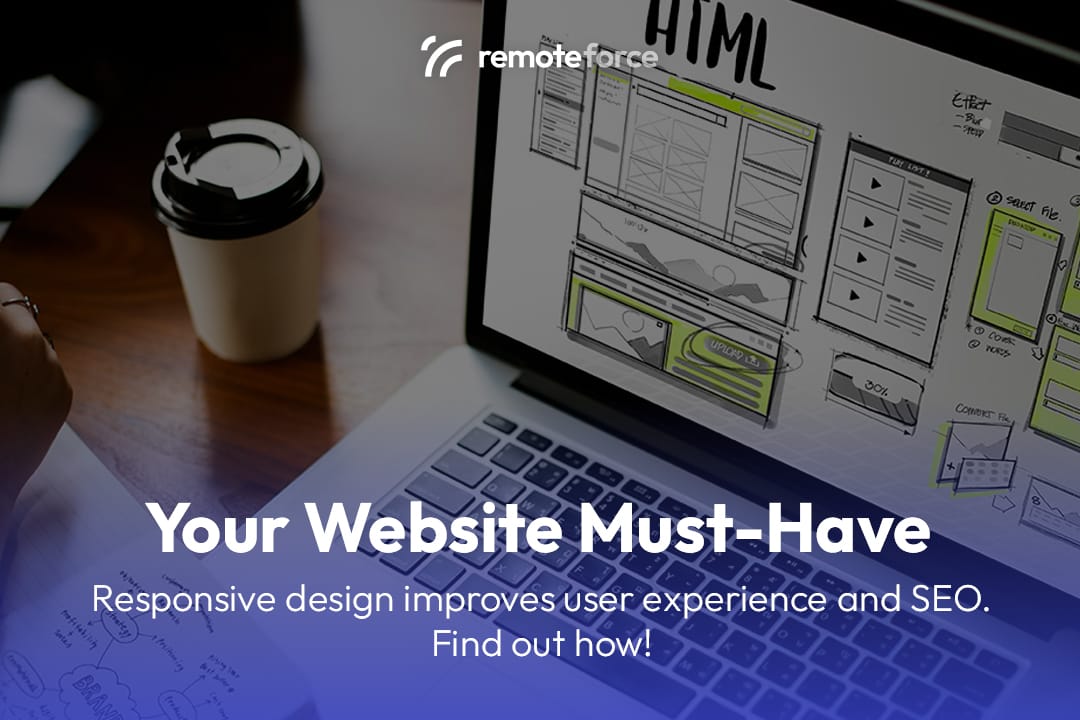In the rapidly evolving digital landscape, your website is often the first impression a potential customer has of your business. But in an era where people access information from an ever-growing array of devices – smartphones, tablets, desktops, and even smart TVs – a website that looks great on one screen but clunky on another is a recipe for lost opportunities. This is precisely why responsive website design matters in 2025 more than ever before.
Responsive web design isn’t just a trend; it’s a fundamental necessity for any business aiming to thrive online. It ensures your site provides an optimal viewing experience, regardless of screen size or device. If you want to improve user experience, boost your SEO rankings, and stay ahead of the curve, understanding why this approach is essential for your business is crucial. Click to find out how a truly adaptive website can transform your online presence.
Table of Contents
ToggleThe Multi-Device World: The Driving Force Behind Responsiveness
The way we consume digital content has fundamentally changed. Gone are the days when desktop computers dominated internet access. As of 2024, mobile devices consistently account for over 60% of global website traffic, a figure that continues to grow. This massive shift means that if your website isn’t optimized for smaller screens, you’re alienating the majority of your potential audience.
Responsive design isn’t about creating separate websites for different devices. Instead, it’s a single website that intelligently adapts its layout and content to fit the screen it’s being viewed on. This adaptive capability is what makes it a cornerstone of modern web development.
Why Responsive Website Design Matters in 2025: Key Benefits for Your Business

Let’s explore the compelling reasons why investing in responsive website design is a strategic imperative for your business this year and beyond.
1. Superior User Experience (UX) Across All Devices
This is the most direct and impactful benefit. A good user experience keeps visitors on your site longer and encourages conversion.
- Optimized Readability: Text sizes, line spacing, and content blocks adjust for easy reading without constant pinching and zooming.
- Intuitive Navigation: Menus transform into mobile-friendly “hamburger” icons or other accessible formats, making it easy to find information on smaller screens.
- Seamless Interaction: Buttons and touch targets are appropriately sized and spaced for finger taps, preventing frustrating mis-clicks. Forms are easy to fill out, and images load correctly.
- Reduced Bounce Rate: When users have a smooth, frustration-free experience, they are less likely to leave your site immediately.
Real-World Scenario: Imagine a potential customer trying to buy a product from your e-commerce site on their phone. If they have to scroll horizontally, struggle to click small buttons, or encounter broken images, they’ll likely abandon their cart and go to a competitor’s site that offers a better mobile experience.
2. Significant SEO Advantages and Improved Search Rankings
Google, the dominant search engine, prioritizes mobile-friendliness. Responsive design is a key factor in how your site performs in search results.
- Mobile-First Indexing: Google primarily uses the mobile version of your content for indexing and ranking. If your mobile site isn’t responsive and well-optimized, your rankings will suffer.
- Reduced Duplicate Content Issues: With one URL and one content set, you avoid the duplicate content penalties that can arise from having separate mobile and desktop sites (e.g., https://www.google.com/search?q=m.yourwebsite.com).
- Improved Site Speed: Responsive designs often employ techniques like optimized images and efficient code, which contribute to faster loading times – another critical SEO ranking factor.
- Better User Engagement Metrics: As mentioned, good UX leads to lower bounce rates and longer dwell times, signals that Google interprets as positive user engagement, boosting your SEO.
Expert Insight: “Google explicitly states that responsive design is their recommended approach for mobile-friendly websites,” emphasizes a leading SEO specialist. “Ignoring this is akin to ignoring Google’s instructions on how to rank well.”
3. Cost-Effectiveness and Easier Maintenance
Managing a single, responsive website is far more efficient than maintaining multiple versions.
- Single Codebase: You only need to develop and maintain one set of code, significantly reducing development time and costs compared to building separate desktop and mobile sites.
- Simplified Updates: Any content or design changes only need to be applied once, across the single responsive site, saving time and ensuring consistency.
- Lower Management Overhead: Fewer resources are needed for testing, debugging, and general site management across different platforms.
4. Future-Proofing Your Online Presence
The device landscape is constantly evolving. Responsive design provides a flexible solution for what’s next.
- Adaptability to New Devices: Responsive websites are inherently designed to adapt to new screen sizes and resolutions as they emerge, from foldable phones to larger smart displays, without requiring a complete redesign.
- Broader Reach: You can confidently reach users on any device they choose, ensuring your message is always accessible.
5. Enhanced Conversion Rates
Ultimately, your website’s goal is to convert visitors into customers, clients, or leads. Responsive design directly contributes to this.
- Seamless User Journey: A consistent and positive experience across devices reduces friction in the conversion funnel.
- Improved Call-to-Action Visibility: CTAs remain prominent and clickable, regardless of screen size.
- Increased Trust and Credibility: A professional, well-functioning website on any device builds trust and signals that your business is modern and reliable.
Conclusion: Embrace Responsiveness, Embrace Growth
Why responsive website design matters in 2025? It’s no longer just a best practice; it’s a fundamental requirement for online success. By prioritizing a responsive design, you’re not just building a website; you’re creating a universally accessible, user-friendly, and SEO-optimized digital experience that actively supports your business goals. It directly improves user satisfaction, boosts your search engine visibility, saves you money, and future-proofs your online presence. In today’s multi-device world, a responsive website is the cornerstone of a strong digital strategy.
If your current website isn’t delivering an optimal experience across all devices, or if you’re planning a new web presence, don’t compromise on responsiveness. At RemoteForce, we specialize in cutting-edge web and app development solutions that prioritize responsive design, ensuring your digital presence is not only visually stunning but also highly functional and performant on every screen. Our expert team crafts custom websites and applications that are optimized for user experience and search engine visibility, driving tangible results for your business. Beyond web and app development, RemoteForce also offers comprehensive digital marketing, graphic design, secretarial, legal, and accounting services, providing a holistic suite of solutions to empower your business.
Ready to transform your online presence with a powerful, responsive website that truly connects with your audience? Contact RemoteForce today to discuss your web development needs!




